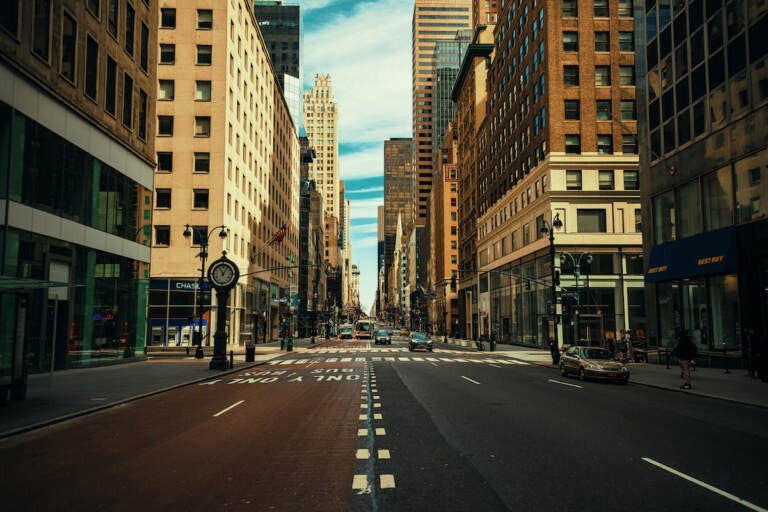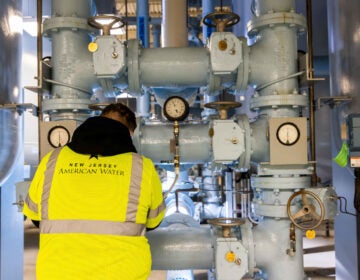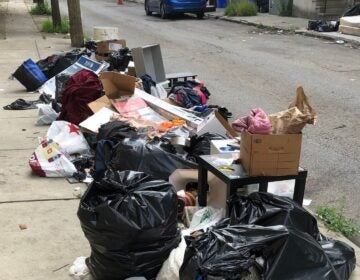How one man savored the silence pandemic lockdown brought
Noises can be painfully loud for people with hyperacusis, a rare hearing condition. When the March 2020 shutdown quieted the environment, less sound meant less suffering.
Listen 6:47
(Pixelvario/Big Stock)
This story is from The Pulse, a weekly health and science podcast.
Find it on Apple Podcasts, Spotify, or wherever you get your podcasts.
Jared Cocken lives with a rare hearing condition called hyperacusis. It makes average, run-of-the-mill sounds painfully loud. Walking by a barking dog feels like a siren is blasting in his ear, he says.
For years, Cocken planned his life in New York City around sound. He’d only meet people at restaurants previously vetted for safe noise levels. He’d walk around the city zig-zagging through Manhattan’s grid, avoiding blocks with screeching subways or bars with noisy patios.
“During the first few years, I wouldn’t go somewhere, to meet someone if I hadn’t been there before and knew what the noise level was like,” Cocken said.
His daily routine was structured to be as quiet as possible. He’d run 10 miles at the gym before dawn, just to wear himself out to sleep through the night. He’d arrive two hours early to his job at a product launch agency, savoring a soundless, empty office. He’d leave early to beat the cacophony of rush hour.
But in the early days of the pandemic, the shutdown transformed the streets — they no longer were the enemy — and brought his environment to a noise level that felt safe and livable.
He was just as concerned as everyone else about the threat and devastation of COVID-19, but Cocken savored the quiet.
“So interesting to see the city change, you know, overnight. And have a totally different kind of, auditory map for the city. And being able to go outside and cautiously experience New York in a very, very different way.”
Subscribe to The Pulse
Americans of all hearing abilities lived through the same pandemic noise drop, and it potentially served as a wake-up call to how loud life can be.
Hyperacusis remains rare, but Cocken’s sensitivity is tuned in to the destructive nature of noise. On average, 1 in 8 Americans will lose hearing in both ears, according to the National Institutes of Health.
Since 2019, the University of Michigan has been conducting the Apple Hearing Study, in partnership with the global tech giant, to study sound’s impact on health.
“Huge chunks of our population … don’t even recognize noise exposure as an issue at all,” said Lauren Smith, a researcher on the project. Instead, harmful noise exposure can carry serious long-term effects for individuals.
When the pandemic shutdowns began in March 2020, Smith was already collecting data on noise environments for individuals across the country. Her team was in the right place at the right time to witness something historical: a nationwide drop in the average sound environment. Starting around March 13 and 14, daily average sound levels for participants in the study dropped approximately three decibels.
Three decibels are pretty significant. A safe level of sound is 70 decibels, according to the Environmental Protection Agency. Prolonged exposures — to city traffic at 80 decibels or a subway braking at 90 decibels — can cause long-term damage.
Our hearing depends on hair cells inside our ears. Exposure repeatedly to high-decibel sounds will cause those hair cells to die. Sounds at 100 decibels — like your iPhone at full blast — can cause damage after just 15 minutes. Immediate damage can be caused by sounds over 120 decibels, such as a loud siren.
Sound and hearing experts often call this noise pollution, and Smith said it can have broad impacts on health. Beyond hearing loss, recent studies have linked noise to an increased risk of cardiovascular disease and hypertension.
Noise is an issue that advocates have raised the alarm about for years. Monica Hammer is an environmental public health lawyer who began advocating for noise pollution policy as a legislative aide to the Chicago City Council.
“Just like people didn’t care about water pollution until a river was on fire, just like people didn’t care about air pollution until you couldn’t see the sky in LA,” she said, America is waiting too long to act on noise.
Hammer sees a number of solutions. At the federal level, noise could be included in more environmental impact statements, essentially treating noise pollution like other pollution. At a city level, garbage trucks could be retrofitted to be quieter. And sirens could be designed to still alert people but at safer decibels.
So there might be a lesson from those quieter days of the pandemic: When we notice the everyday noises around us, maybe we should question how loud they should be.
WHYY is your source for fact-based, in-depth journalism and information. As a nonprofit organization, we rely on financial support from readers like you. Please give today.






